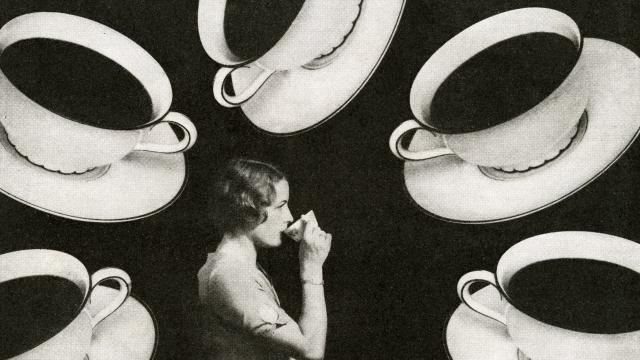So you like bold coffee, but all you have at home is a bag of light-roast beans. What to do? Well, one solution is to buy another bag of coffee — but with some small tweaks, it is possible to get dark-roast flavour out of light-roast beans.
To clarify, we’re talking about stronger flavour, not more caffeine. If you want the latter, you’ll just need to brew your coffee for longer (which, as a bonus, can also lead to bolder flavour). And depending on how you measure your coffee beans before brewing — by weight or by the scoop — you may get anywhere from a very small to a very significant caffeine boost with a darker roast.
Also, note that the easiest way to gain more control over your coffee is to use a scale. A scale allows more precise measurement of both beans and water, so you can tweak your variables more precisely as well. If you don’t have one, get one.
At the most basic level, brewing coffee is just leeching the “soluble solids” from ground beans with water — and in general, the more that you extract, the stronger the flavour of the final cup. Here are a few ways to do it.
Pick a darker roast
First, your best bet is to figure out what roast produces your preferred flavour so you buy the right beans next time. Broadly, coffee beans are roasted light, medium or dark. There’s a lot of nuance in those classifications, but the important thing to know is that the roast level affects the flavour of your final brew. In general, lighter roasts are more acidic, and your cup of coffee will taste more like the bean itself. Darker roasts are oilier, and the flavour reflects the roast more than the bean.
If you want “stronger” coffee, choose a darker roast; that bold flavour comes in part from the oil that’s released during roasting.
Most roasters will roast on the light-to-dark spectrum to optimise the flavour of each specific bean. If you’re buying your beans from a local roaster — and you should, both to support a local business and to get the freshest beans possible — ask how they suggest you brew your bean of choice, or for specific recommendations for handling light versus dark roasts.
And if you’re wondering if you can just roast your too-light beans a little darker at home, the answer is no. Don’t even think about it: The initial roasting creates a series of chemical reactions, and once your coffee beans have been packed, purchased and opened, that process cannot be continued. You’ll likely just end up with burnt, useless beans.
Increase your brewing time
If a light or medium roast is all you have handy and you need strong coffee now, simply increase your brew time. The longer the grounds sit in water, the more flavour will be extracted from the beans and the stronger your final cup will be.
The easiest way to slow down the brewing process is to use a finer grind. This increases the surface area of your coffee grounds and slows the flow of water, which lengthens the contact time. Proper grind size is specific to each brew method, so start with what’s recommended for your brewing method and slowly go finer.
If you’re using a French press, fine grounds are more likely to slip through the filter and end up in your brewed coffee. Since French press coffee is already stronger than other methods, this step probably isn’t necessary.
Use more coffee
Another way to get a bolder flavour out of your light or medium beans is to use more of them. Again, this just allows more contact between the grounds and the water.
A standard ratio of coffee to water is 1:16 (by weight in grams — use that scale), but for a stronger cup you can bring it up to 1:12. If you’re measuring in scoops of grounds and fluid ounces of water, try these ratios for your preferred brewing method.
The downside of this approach is that you’ll go through your beans more quickly.
Change your brewing method
This one may require some investment — and may not help you if you’re reading this at the moment you need your coffee — but certain brewing methods provide stronger results than others. Full-immersion brewers like the French press don’t filter out the oils we mentioned earlier. A pour-over cone has a similar effect. And high-pressure methods like Aeropress (with a metal filter!) can also extract more flavour from your beans.
This doesn’t mean you need to rush out and buy a bunch of new equipment. Use what you have and start by adjusting either the grind size or coffee-to-water ratio (if you don’t have darker beans on hand).
Finally, keep in mind that taking any of these steps too far means you will only end up with a bitter cup of coffee — not a stronger or more flavorful one. Coffee preferences are highly personal, so it may take some experimentation to find the perfect solution for you. As long as your coffee tastes good to you, you’ve won.
(And if all else fails, you can’t really go wrong with AeroPressing your coffee directly into a can of sweetened condensed milk.)

Leave a Reply
You must be logged in to post a comment.